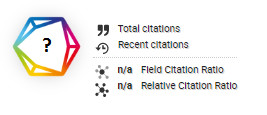The Effectiveness of Billboards of Billboards as Political Campaign Media for Elected DPRD Members for the 2024-2029 Period in Kendari City
DOI:
https://doi.org/10.46984/sebatik.v28i2.2508Keywords:
Billboards, Political Campaigns, Elected DPRD Members, Regional ElectionAbstract
This study aims to analyze the effectiveness of billboards as a political campaign medium for elected DPRD members for the 2024–2029 period in Kendari City. The research employs a qualitative method, with data collected through interviews, observations, and document analysis. The informants in this study were elected DPRD members in the 2024 election from all electoral districts (DAPIL) of Kendari City, selected purposively. Observations focused on billboards installed in each electoral district, while document analysis utilized secondary data obtained from the KPU, BAWASLU, and Kendari City DPRD institutions. The data was analyzed using an interactive model that includes data collection, reduction, analysis, and presentation. The results indicate that most elected DPRD members in Kendari City employed billboards as a key political campaign tool. These billboards were self-designed, incorporating effective billboard elements and were utilized by both incumbent and new members. Typically, the billboards featured photos, candidate serial numbers, names and titles, party logos, and short campaign messages. Some billboards also included photos of party leaders as well as presidential and vice-presidential candidates supported by their respective parties. The sizes of the billboards ranged from 2 meters x 3 meters to 4 meters x 6 meters, with placements concentrated around electoral districts and along main roads. The strategic design and placement of billboards are expected to enhance public appeal and engagement.
References
Aditya, R. (2024). Legislatif Dprd Provinsi Sumatera Utara Tahun 2024. Jurnal Review Pendidikan Dan Pengajaran, 7, 15313–15319.
Amalia, A., Ode, L., Umran, M., & Larisu, Z. (2024). Strategi Komunikasi Politik Caleg Dprd Pks Kabupaten Konawe Pada Masa Pemilu 2019-2024 the Political Communication Strategy of the Candidates Pks in Konawe Regency 2019-2024. 14(2), 223–231.
Anam, C. (2018). Pengaturan Alat Peraga Kampanye Dalam Pelaksanaan Pemilihan Kepala Daerah. JKMP (Jurnal Kebijakan Dan Manajemen Publik), 6(2), 113–118. https://doi.org/10.21070/jkmp.v6i2.3005
Falimu. (2021). Jurnal Sosio Sains. Jurnal Sosio Sains, 7(2), 108–115. http://journal.lldikti9.id/sosiosains
Ghifary, A. (2014). Efektivitas Penggunaan Media Iklan Baliho. Ejournal.Ilkom.Fisip-Unmul.Ac.Id, 2(3), 26–39.
Halim, U., & Jauhari, K. D. (2019). Pengaruh Terpaan Media Terhadap Partisipasi Politik Dalam Pilkada Dki Jakarta 2017. Jurnal ASPIKOM, 4(1), 45. https://doi.org/10.24329/aspikom.v4i1.385
Khairuddin, M. N., & Mohamed, M. N. A. (2023). A Systematic Literature Review on Graduates’ Social Intelligence. Journal of Techno-Social, 15(1). https://doi.org/10.30880/jts.2023.15.01.006
Khatami, M. I. (2021). The Existence Of “ Baliho 2024 ” In The Electricity Fight : Image Analysis Of Political Figures. Jurnal Imu Sosial Dan Ilmu Politik Universitas Jambi (JISIP-UNJA), 5(2), 14–24.
Larisu, Z., Prajarto, N., & Subejo, S. (2022). Pemberitaan TV Lokal dan Pembangunan Daerah Berkelenjutan di Indonesia: Studi Intensif Pada Konten Berita Pembangunan Daerah Berkelanjutan di TVRI …. JISIP (Jurnal Ilmu …, 6(2), 9728–9736. http://ejournal.mandalanursa.org/index.php/JISIP/article/view/3211%0Ahttp://ejournal.mandalanursa.org/index.php/JISIP/article/download/3211/2484
Libna, C., Wina, A., Sari, P., Soegiarto, A., Muka, J. R., Rw, R. T., Gadung, P., Timur, K. J., & Khusus, D. (2024). Efektivitas Baliho dalam Meningkatkan Citra ‘ Idris Sandiya ’ sebagai Calon Legislatif DPR RI Dapil Jabar VI. 6, 73–85.
Matthew B. Miles; A. Michael Huberman; Johnny Saldana. (2014). Qualitative Data Analysis (Third edit). SAGE Publications, Inc.
Michele;, A. Y. N. A. S. K. J. D. G. F., & S, M. B. (2023). Evaluasi Penggunaan Baliho Sebagai Media Kampanye Dalam Perspektif Sila Kedua Pancasila. Nusantara: Jurnal Pendidikan, Seni, Sains Dan Sosial Humanioral, 1(2), 1–25. https://doi.org/10.11111/nusantara.xxxxxxx
Pamungkas, A. (2022). Pemasaran Retorika Politik dalam Iklan Baliho Tokoh Politik Indonesia. Kalijaga Journal of Communication, 4(2), 133–154. https://doi.org/10.14421/kjc.42.02.2022
Purnengsih, I. (2017). Makna dan Pesan dalam Baliho Pemilu Legislatif 2014. Jurnal Desain, 4(03), 231. https://doi.org/10.30998/jurnaldesain.v4i03.1604
Rahmad, R., Asrinaldi, A., & Indraddin, I. (2020). Kendala Implementasi Kebijakan Fasilitasi Alat Peraga Kampanye Pemilu 2019 di Kota Bukittinggi. Jurnal Sosial Politik, 6(1), 55. https://doi.org/10.22219/sospol.v6i1.11028
Sutarini, I. A. (2019). Pengukuran Efektivitas Penggunaan Media Baliho Pada Pemilihan Umum 2019 Terhadap Generasi Milenial. SENADA (Seminar Nasional Desain Dan Arsitektur), 2, 237–241.
Tasente, T. (2021). The 4 phases of evolution of political communication systems: from the golden age of the parties to the golden age of the users. Technium Social Sciences Journal, 2(January), 76–83. https://doi.org/10.47577/tssj.v2i1.50
Violin, S. A., Hussain, M. A., Maharani, D. G. H., Putri, S. T. S., DJ, S. T. A., Farizi, M. G. Al, Al Khafidhoh, L., & Dewi, R. (2024). Faktor-Faktor yang Mempengaruhi Keputusan Pemilihan Dalam Pilpres 2024 pada Mahasiswa Fakultas Ilmu Sosial dan Ilmu Politik Universitas Jenderal Soedirman Angkatan 2023. Jurnal Socius: Journal of Sociology Research and Education, 11(1), 25–36. https://doi.org/10.24036/scs.v11i1.595
Downloads
Published
How to Cite
Issue
Section
License
Copyright (c) 2024 Zulfiah Larisu, Sumadi Dilla, Laode Harjuddin, Muhammad Rajab

This work is licensed under a Creative Commons Attribution 4.0 International License.
Authors retain all their rights to the published works, such as (but not limited to) the following rights; Copyright and other proprietary rights relating to the article, such as patent rights, The right to use the substance of the article in own future works, including lectures and books, The right to reproduce the article for own purposes, The right to self-archive the article








